#Croton plant
Text

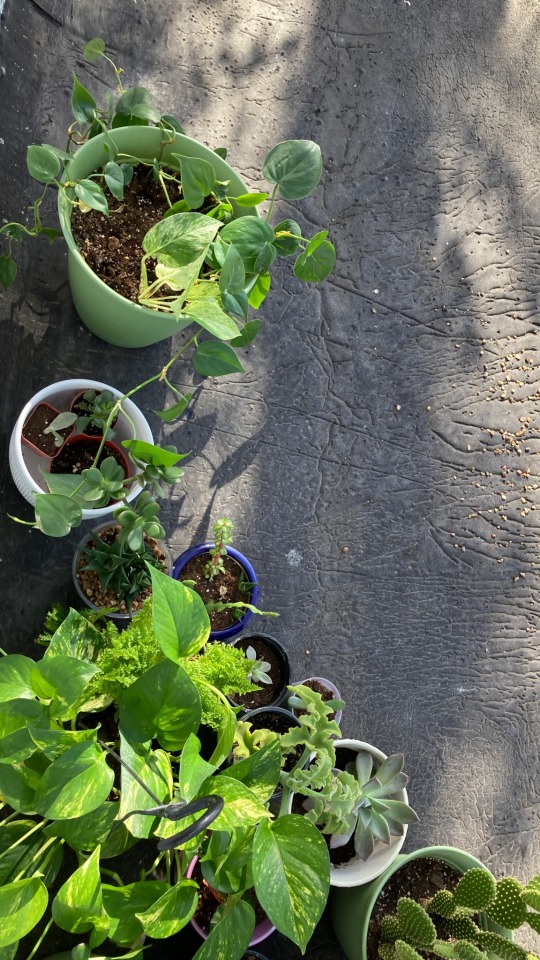
Last few days of warmth are being happily enjoyed
#plant photography#plants#golden pothos#succulents#alocasia#angel wings#cactus#aloe vera#marble queen pothos#heart leaf philodendron#croton plant#roof plants#rooftop#roof#plant parent#plantblr#plantcore#plant blog#plant life#plantlover
8 notes
·
View notes
Text


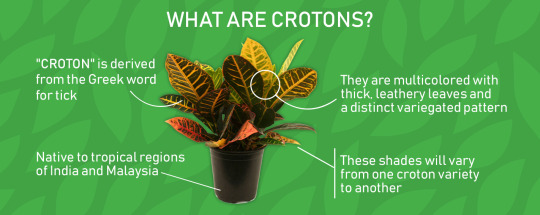
The croton plant is a perennial evergreen shrub that’s native to tropical regions of India and Malaysia. These striking plants are multicolored with thick, leathery leaves and a distinct variegated pattern. A croton’s bright colors are its most recognizable feature, and these shades will vary from one croton variety to another, ranging from green and gold to blue-green and pink. While all mature crotons possess these vibrant colors, the leaves will darken as the plants age, eventually turning almost black.
The name “croton” itself is derived from the Greek word for tick, since the heavy veins that criss-cross the leaves bear a striking resemblance to these insects. This name is pronounced phonetically, and sounds like “crow-tun.” Crotons are commonly confused with a plant called Rushfoil but don’t be fooled. Rushfoil is a subspecies of crotons — one of the many different varieties that fall into this larger plant family.
Croton height will vary slightly depending on the variety. Most will be around 3 feet tall although some can grow as tall as 10 feet. Dwarf varieties exist as well, and these will be much shorter. Crotons are also exceptionally full plants, with the large leaves growing in clusters to give the plant greater volume.
https://www.beegreen365.com/services/shrub-and-ornamental-care/croton-plant-care/
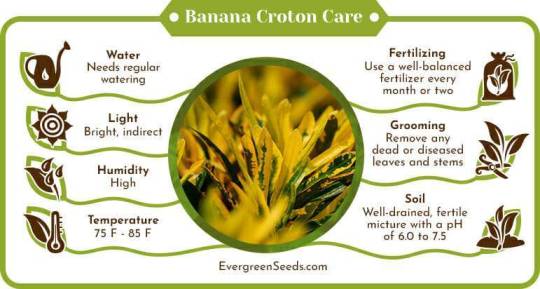
Where Should I Keep my Crotons?
Whether you decide to keep your crotons inside or out, make sure to place them in a spot where they’ll get plenty of sunlight throughout the day. Without this, those gorgeous colors will quickly begin to fade.
To plant crotons in a pot, begin by choosing a planter with several drainage holes that is roughly one third larger than the croton’s root ball. Fill the container about a third of the way full of potting soil before carefully nesting the ball on top of this soil bed. Continue adding soil around and over the roots until the pot is full and the roots are buried about an inch below the surface. Water the plant, let it drain and then set it in its new home in a sunny location.
It’s crucial to remember that crotons favor a warm, humid environment. If you’re planting them in a very different climate, your goal is to mimic these conditions as much as possible. To achieve this, the soil in which crotons are planted should remain moist but not soaking, particularly during the spring and summer when crotons will be doing most of their growing. To judge if the plant needs water, feel the soil. If it’s starting to feel dry and crumbly, give it a little water. If it still feels moist to the touch, it probably has all the water it needs.
If you’ve felt the croton’s soil and still can’t determine whether or not it needs water, let the plant’s foliage be your guide. If the leaves are drooping or curling up, that’s their way of asking you for more water. If they’re perked upright, however, they’re probably doing just fine. If the air inside your home is especially dry, or if you have the croton planted outside and live in an arid environment, you may need to water it a little more often. You may even want to mist the leaves with a spray bottle to keep the leaves healthy and growing.
Remember that just as crotons should not be allowed to dry out, neither should they be kept too wet. Too much water can rot the roots and kill the plant just as easily as if it had been left too dry.
How To Propagate CROTON Plant In Water With 100% RESULTS
How to grow Croton plant without soil
https://youtu.be/c_ZfYmpVVOs
youtube
0 notes
Text
Cordyline fruticosa
The Cordyline fruticosa plants are most beautiful eye-catching evergreen perennial plants with broad leaves. Plant foliage varies in different colors such as red, pink, yellow, white & other streaks.
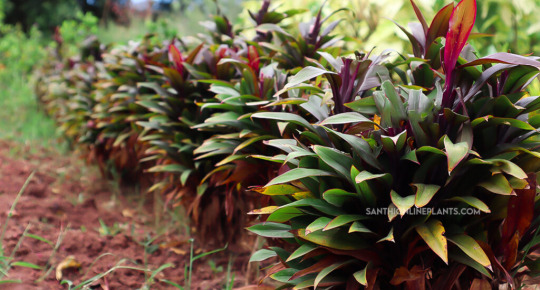
Good Luck plant
These cordyline fruticosa plants are commonly called Hawaiian ti plant, good luck plant, ti plant, palm lily, cabbage palm, and miracle plant belonging to Asparagaceae. This plant is often believed to bring good luck to the home.
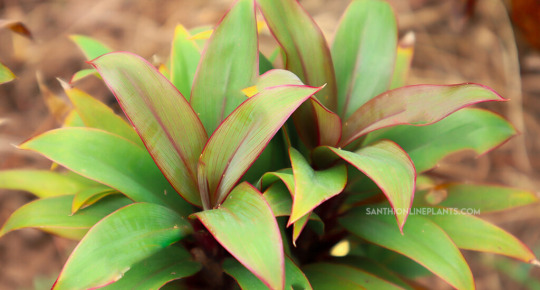
Hawaiian ti plant
This cordyline plant variety prized & beloved especially for its colorful, long-lasting foliage with attractive stripes. The name Hawaiian ti plant name due to the reason that this croton plant believed to bring positiveness, creation, and blessing during those times in Hawaiian culture.

Ti- plant Varieties
This croton plant variety range from about 100+ plants. Among those the most popular varieties such as Cordyline congesta, cordyline rumba, cordyline kiwi, black magic, australis purpurea, Lemon-lime, miss andrea, red Ruby, celestial queen, & Hybrid ti.

Cordyline congesta
This croton plant variety has attractive dark-colored foliage with smooth, glossy broad leaves. It is fast growing plant with a woody stem.
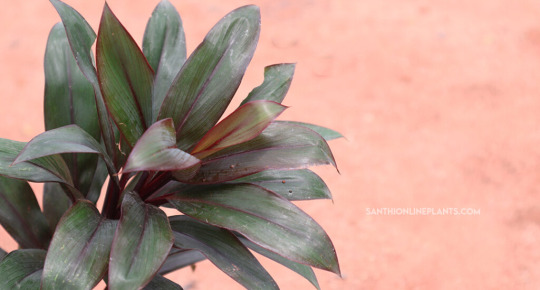
Benefits
The placement of ti -plant croton plant is believed to bring good luck, peace and positivity to home.
Cordyline Ti plants are pests & diseases resistant plants.
The most beautiful feature of this plant is the colorful foliage & air-purifier.
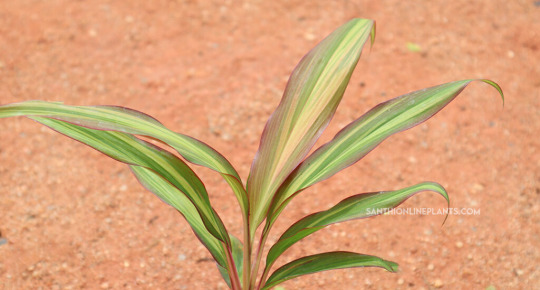
Cordyline fruticosa-ti plant crotons
Blog Completed By: Santhionlineplants
#t is fast growing plant with a woody stem.#ti plant congesta#Cordyline rumba#The most attractive ornamental plant grows like dracaena plants with wide long leaves. The foliage color seems to be dark green with pink s#croton plant#Andrea#This Hawaiian ti plant has a wide range of creamy yellow stripes which make the environment look eye-catching. This ti plant placement can#hawaiian ti plant#Care & Maintenance#Soil#This cordyline ti plant loves to grow in a wide range of fertile soil preferably acidic pH. Soil may be sandy loam#clay#or coco peat potting mix.#soil#Watering#This good luck plant requires regular intervals of watering during the summer season. Minimize watering the cordyline plants during the win#watering for ti plant#Sunlight#Sunlight requirement for this variety is direct sunlight of 4-5 hours with partial shade. Too much light may fade some variegated cordyline#sunlight#Propagation#This croton variety propagated through the methods such as Tip cuttings#Stem cuttings & Air-layering.#Tip Cuttings#From mature plants take the tip cuttings. Take tip cuttings from 3-4 cm of the plant. And plant the cutting in potting mix or soil.#Stem Cuttings#Take 3-4’ cuttings from the matured plant just below the node of the plant and place the plant in the prepared potting mix.#stem cuttings#Placement#The placement of this plant in both indoor & outdoor environments.
0 notes
Text
Cordyline fruticosa
The Cordyline fruticosa plants are most beautiful eye-catching evergreen perennial plants with broad leaves. Plant foliage varies in different colors such as red, pink, yellow, white & other streaks.
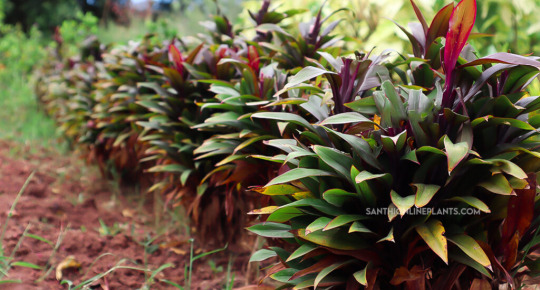
Good Luck plant
These cordyline fruticosa plants are commonly called Hawaiian ti plant, good luck plant, ti plant, palm lily, cabbage palm, and miracle plant belonging to Asparagaceae. This plant is often believed to bring good luck to the home.
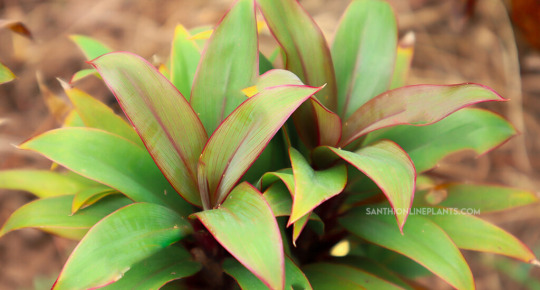
Hawaiian ti plant
This cordyline plant variety prized & beloved especially for its colorful, long-lasting foliage with attractive stripes. The name Hawaiian ti plant name due to the reason that this croton plant believed to bring positiveness, creation, and blessing during those times in Hawaiian culture.
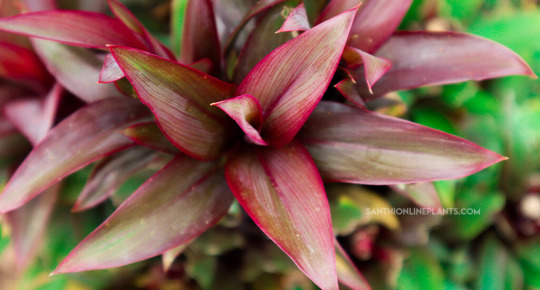
Ti- plant Varieties
This croton plant variety range from about 100+ plants. Among those the most popular varieties such as Cordyline congesta, cordyline rumba, cordyline kiwi, black magic, australis purpurea, Lemon-lime, miss andrea, red Ruby, celestial queen, & Hybrid ti.

Cordyline congesta
This croton plant variety has attractive dark-colored foliage with smooth, glossy broad leaves. It is fast growing plant with a woody stem

Fertilizer
Application of any organic fertilizer or well-decomposed manure around the plants helps to grow this croton plant bushy clump & wide in appearance.
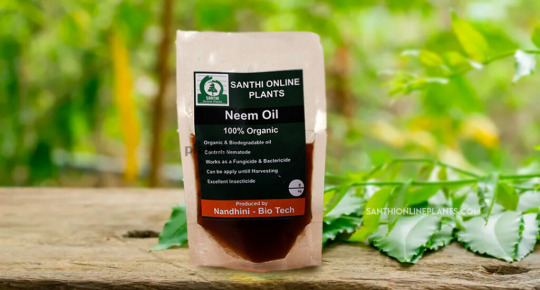
Benefits
The placement of ti -plant croton plant is believed to bring good luck, peace and positivity to home.
Cordyline Ti plants are pests & diseases resistant plants.
The most beautiful feature of this plant is the colorful foliage & air-purifier.
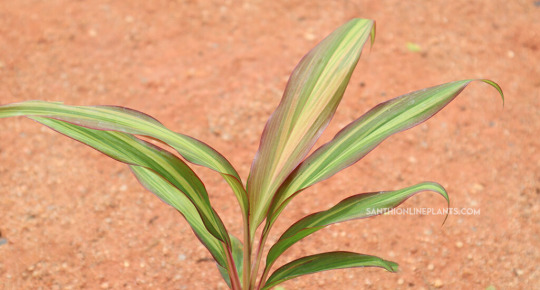
#Cordyline congesta#This croton plant variety has attractive dark-colored foliage with smooth#glossy broad leaves. It is fast growing plant with a woody stem.#ti plant congesta#Cordyline rumba#The most attractive ornamental plant grows like dracaena plants with wide long leaves. The foliage color seems to be dark green with pink s#croton plant#Andrea#This Hawaiian ti plant has a wide range of creamy yellow stripes which make the environment look eye-catching. This ti plant placement can#hawaiian ti plant#Care & Maintenance#Soil#This cordyline ti plant loves to grow in a wide range of fertile soil preferably acidic pH. Soil may be sandy loam#clay#or coco peat potting mix.#soil#Watering#This good luck plant requires regular intervals of watering during the summer season. Minimize watering the cordyline plants during the win#watering for ti plant#Sunlight#Sunlight requirement for this variety is direct sunlight of 4-5 hours with partial shade. Too much light may fade some variegated cordyline#sunlight#Propagation#This croton variety propagated through the methods such as Tip cuttings#Stem cuttings & Air-layering.#Tip Cuttings#From mature plants take the tip cuttings. Take tip cuttings from 3-4 cm of the plant. And plant the cutting in potting mix or soil.#Stem Cuttings#Take 3-4’ cuttings from the matured plant just below the node of the plant and place the plant in the prepared potting mix.#stem cuttings
0 notes
Text


How to Care for Your Croton Plant
Botanical NameCroton tigliumCommon Name Variegated Laurel
One of the best and charming houseplants because it appears in a variety of colors, leaf shapes, and sizes. Learn how to care for your Croton plant.
The Croton plant, also called “garden croton,” is popular for its exotic appearance because of its bold and bright foliage. Similar to the Fiddle Leaf Fig, it also has a reputation for being fussy and high maintenance, but in reality, this tropical plant is easy-to-grow and hard-to-kill, if you know how to care for your Croton plant.
Fun Fact: The seeds from the Croton plant are used to make medicine for emptying and cleansing the stomach and intestines and treating blocked intestines, colic, gallbladder problems, and malaria. However, experts believe that Croton seeds are unsafe, especially for women who are pregnant.
There are only a few houseplants that are as striking or vivid as the Croton plant. Native to Australia and Southeast Asia, this vibrant houseplant is an attention stealer because of its broad and glossy green leaves splashed with black, cream, orange, pink, purple, red, or yellow. However, to maintain its colorful leaves, you should choose the right location for your Croton plant where it will receive the right type of sunlight.
As we have mentioned that the Croton plant has a reputation for being fussy and high maintenance, and that’s because they tend to make a bad first impression, especially for new owners of this plant. We have heard stories that the Croton plant has lost some of its foliage in its new home. Don’t be shocked if this happens because it’s normal Croton behavior.
Similar to the Fiddle Leaf Fig, it doesn’t like to be moved because it causes shock and stress, which results in leaf loss. However, once your Croton plant has adjusted, and you have provided proper care, it will flourish and prove to be a resilient houseplant.

0 notes
Text





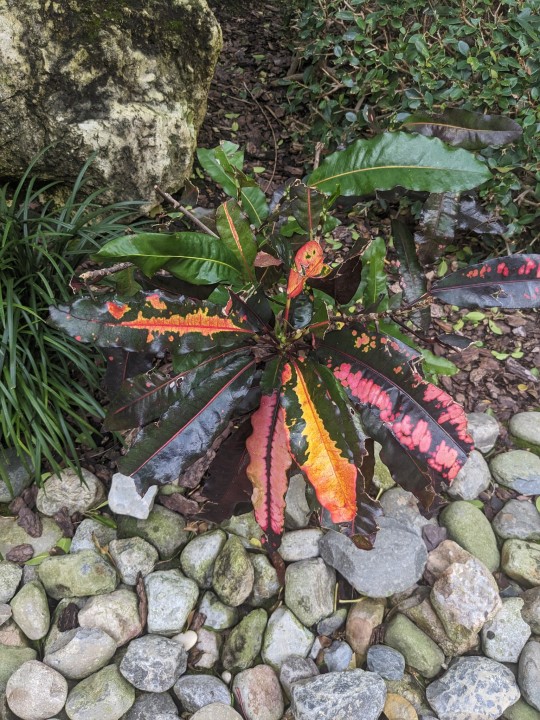


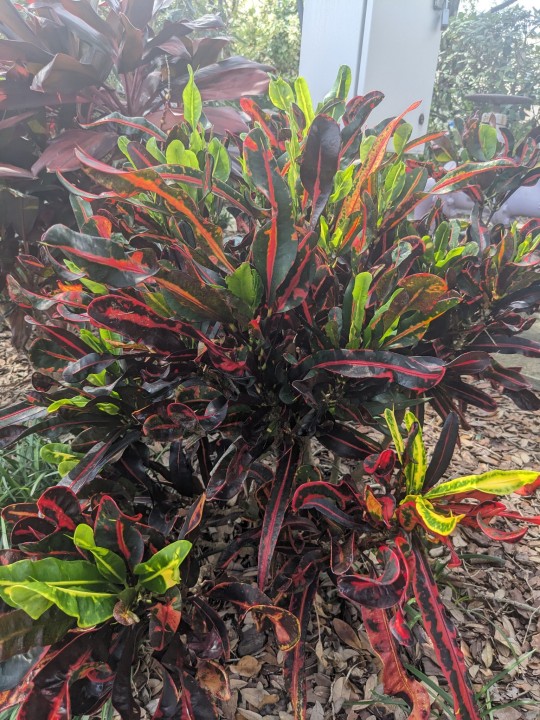
56 notes
·
View notes
Text
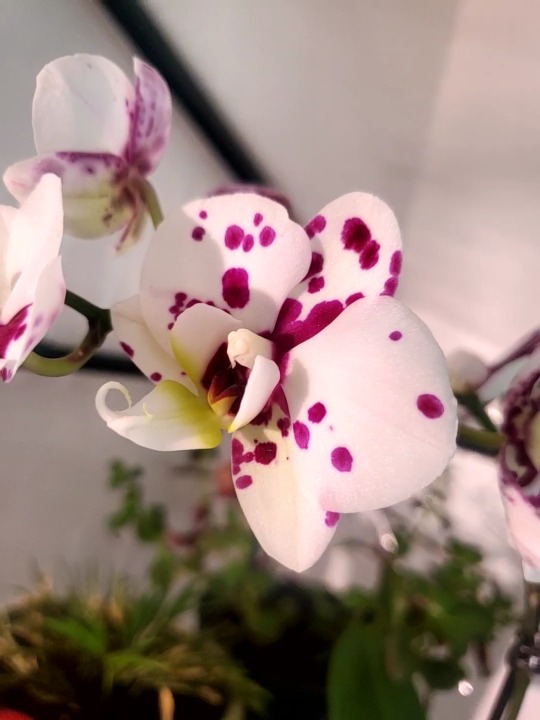

I just love plants. Nature is neat 🪴
14 notes
·
View notes
Text
"gets weirdly intense about houseplants" would definitely be in my bio if i were a character
#liz commented on my most recent fic#and reminded me i'm in a snit with my giant philo again#the girls are fighting#full respect to yt people and ig people who are like THIS IS HOW TO CARE FOR UR PLANTS#but my plants have unionised and at this point i am merely reacting to their whims#can and will kill every aloe i come into contact with#have accidentally kept 2 crotons and several monsteras alive for years#ficus hate being cold? my lil bitch is in the coldest room of my flat and throws a fit if i put her somewhere even slightly warmer#ferns are so easy to care for? dead. all of them dead.#string of x are so fussy!!! meanwhile i forget my turtles and hearts exist and they're Taking Over#alocasias are bastards though that's the truth i don't know what they want#anyway ignore me i'm yelling about plants#that's not even half of my collection rip 💀#so it is decreed
17 notes
·
View notes
Text
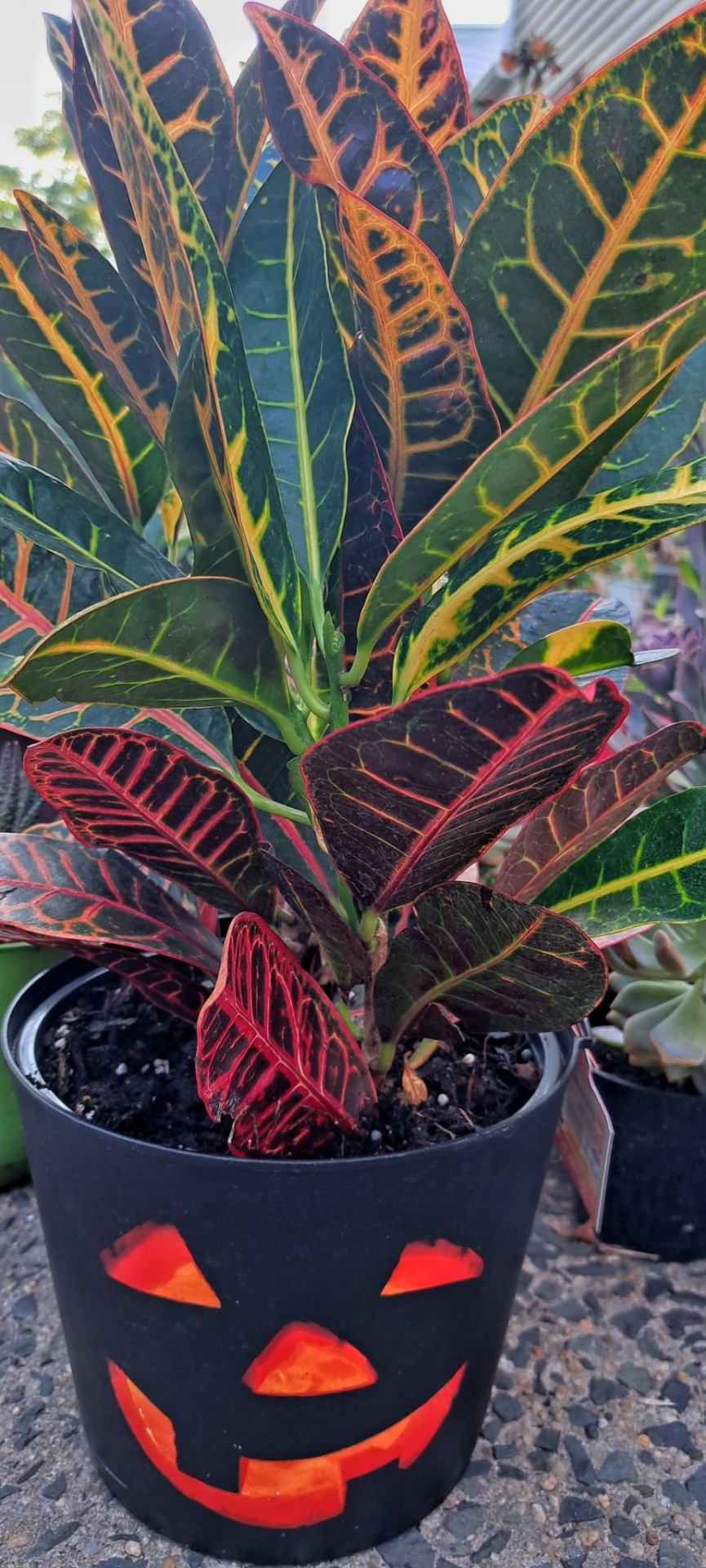
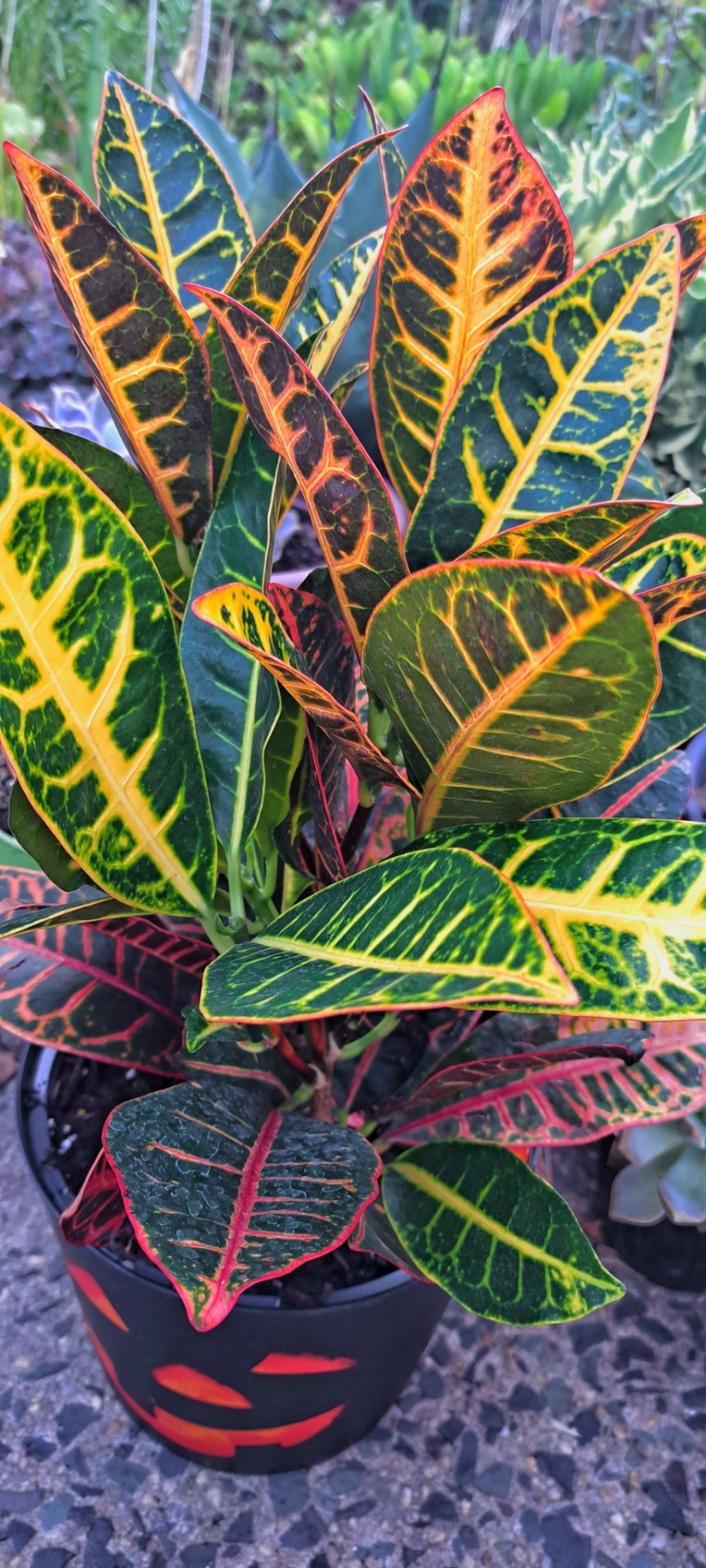
Got my first fall plant 🪴 A Croton🖤🎃🌿
#plant photos#plants#plant life#plant#plant photography#croton#halloween aesthetic#fall plant's#fall plants#plant leaves#plant love#plant lover#plant aesthetic#plant lady#fall asthetic#fall flowers#fall#fall season#fall 2022#pumpkin#jack o lantern#fall aesthetic#my plants#my photography#my photos
304 notes
·
View notes
Text
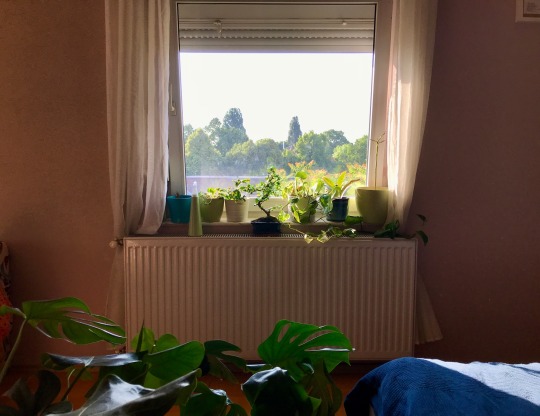
I got a handsome bonsai from my old team as a farewell gift. How thoughtful!
26 notes
·
View notes
Text
Song of the Day: May 11
"Natalie” by Bruno Mars
#song of the day#a very very rare event today: Nick recommended a song to me!#he really likes the beat and he thought I'd appreciate the bridge which he demonstrated for me as#'I shoulda known better (I shoulda known better) / cause when we were together (cause when we were together)#she never said forever (she never said forever) / I'm a fool that played in her game / *Bruno Mars sound*'#it was a pretty good Bruno Mars sound I gotta say. recognizable#also today we went to the reptile show!!!! it was wonderful I got to see so many snakes and pet so many plants#I got a new plant even though I don't have room (had to rearrange two tables so it can get appropriate light)#it's a croton variant they call it 'picasso' because instead of normal leaf shapes they're very long and thin and look like a paintbrush!!#we did not get a frog for Duncan#we're reconsidering what kind he might want and how feasible different ones might be
3 notes
·
View notes
Photo
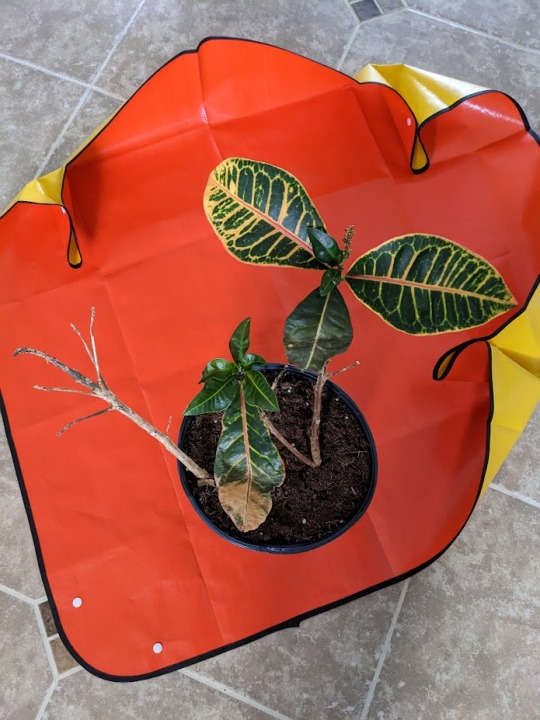


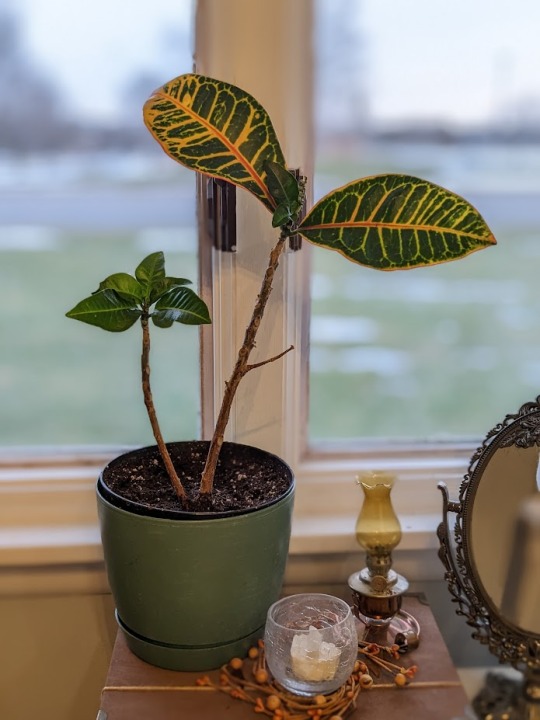
cut my life into pieces this is my last resort
#THIS FUCKING PLANT FKSJDKSJ#i have no idea if that little twig is going to grow but it has a bunch of nodes so i'm crossing my fingers#idk if i should put a clear dome over it for moisture?#if you're not caught up on Brandi Lore i got this croton in the clearance section bc it was fucked up#it has suffered every disease known to man#and i've slowly brought it back to life and it was doing sooo well but now it's dying again lmao#but it refuses to stay dead#even when my power went out for days and it was below freezing inside#for as long as this plant keeps fighting i will keep fighting alongside it lol#i'll be devastated if it dies for real#ms. crouton is my freaking pet#nonsims#crouton saga
41 notes
·
View notes
Text
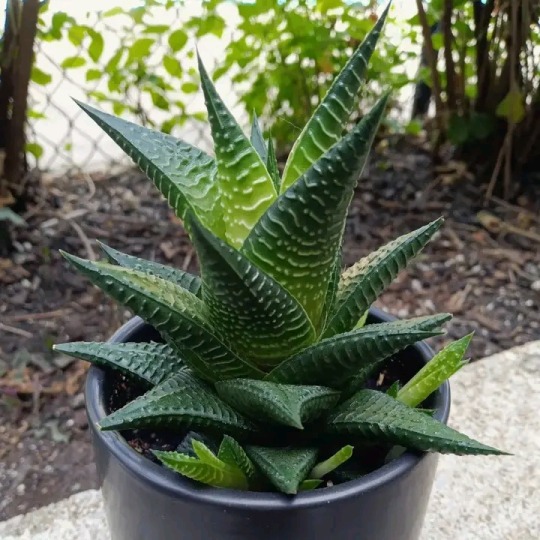



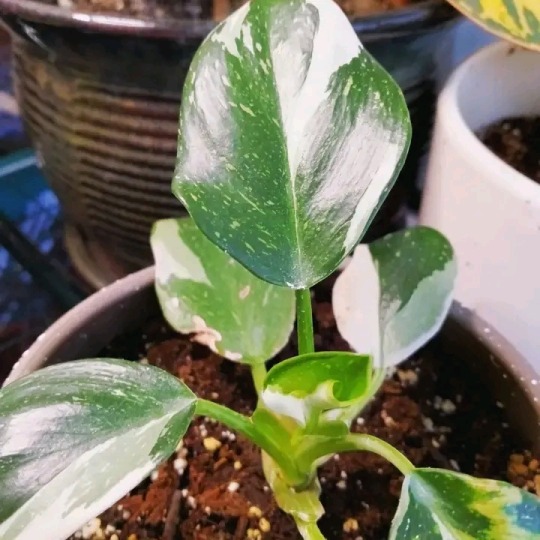
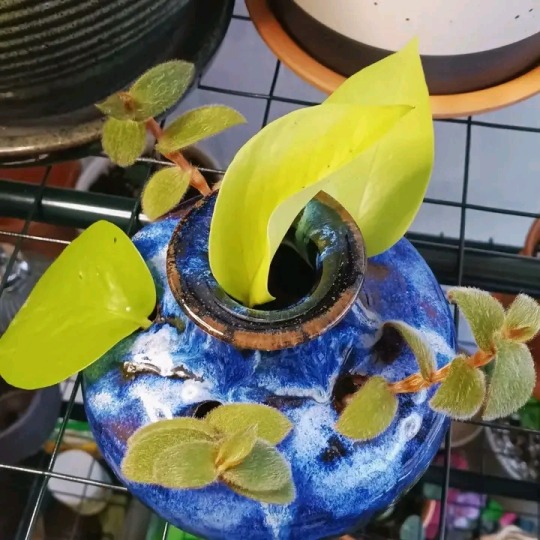
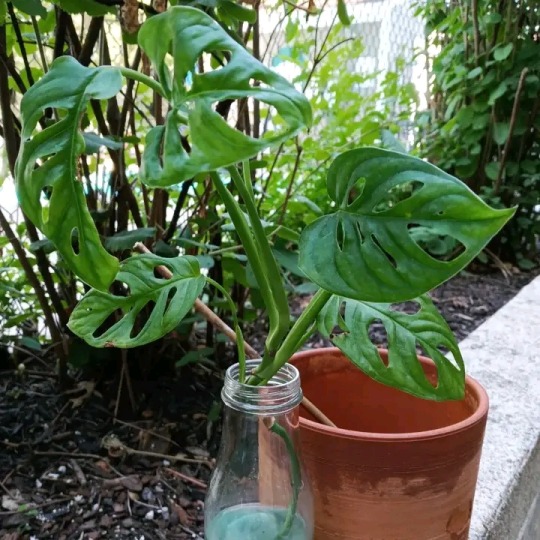
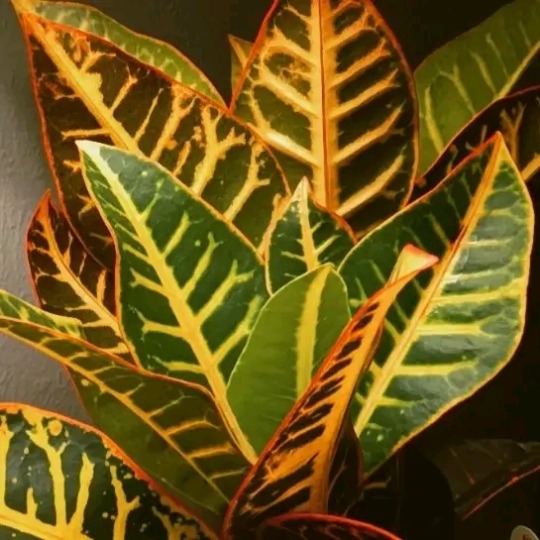

January 10th is Houseplant Appreciation Day! 💚
I am so thankful to have found such a fascination and love for taking care of plants. I have enjoyed plants since I was little, but it wasn't until I brought home an aloe vera the summer of 2021 when I felt my connection to plants really blossom. They give me so much joy, especially whenever I bring a plant home that isn't feeling so well and I get to provide the nourishment it needs to watch it bounce back up. We are about halfway through the cold season, and once the cold and dark hours lighten up, I am excited to see what growth my plants and I will achieve this year. 💚 I'm hoping to post more original posts onto this side blog as well!
🪴 Plants in photos in order of appearance:
Zebra haworthia
Heartleaf vine, Brasil/Brazil var.
Green Global pothos
Coleus
White wizard philodendron
Propagation pot with teddy bear vine and neon pothos
Monstera adansonii, "Swiss cheese plant."
Petra croton
Teddy bear vine
#houseplants#plantblr#haworthia#pothos#monstera#philodendron#croton#vining plant#succulents#mine#tag later
6 notes
·
View notes
Text


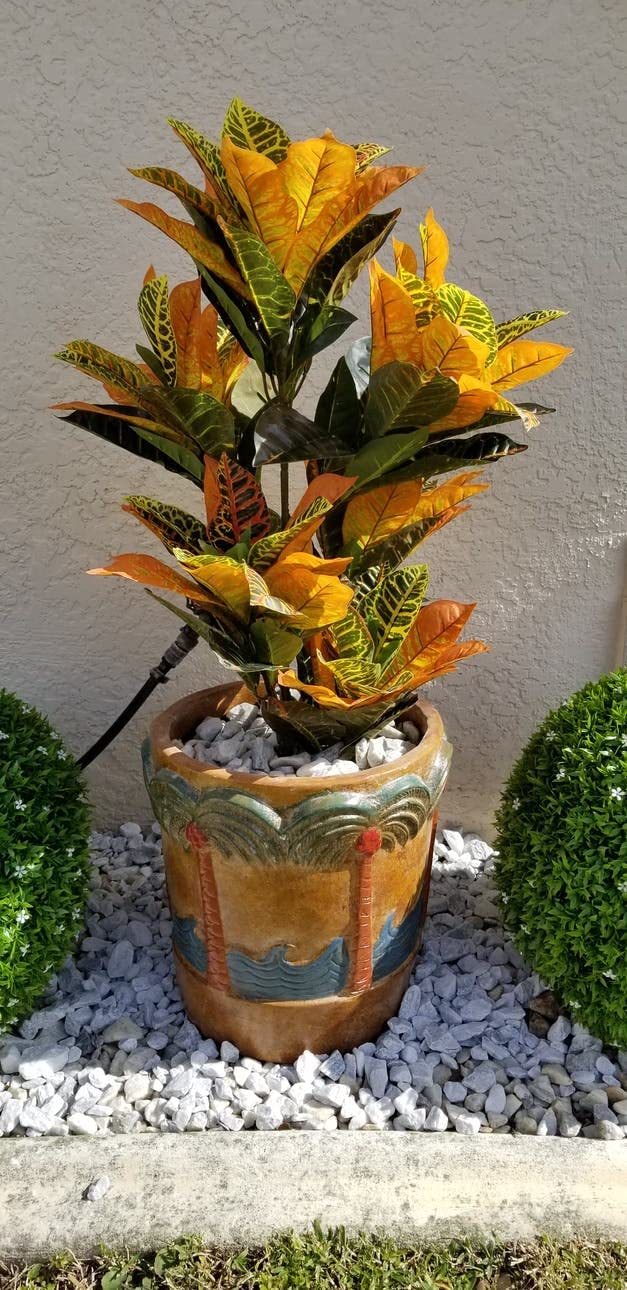
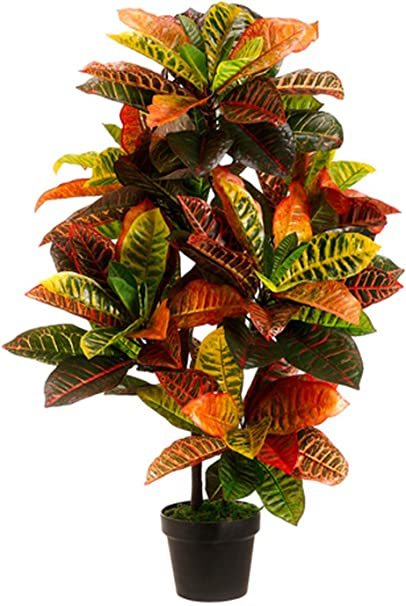
Nearly bright enough to make your eyes water, the croton’s flashy leaves are variegated in bright yellow, red, and orange set against dark green or black. Sometimes also known as the rushfoil plant, the croton thrives in bright, well-lit rooms with south, east, or west-facing windows. They can be grown in lower-light conditions, but the leaves may lose a lot of their bright coloring.
Native to the rainforest of Southeast Asia, the croton prefers well-drained soil and must be kept at the proper humidity in order to thrive. To ensure that your croton receives sufficient moisture, mist regularly or create a humidifying tray filled with pebbles and water and place your plant on top of the pebbles and out of direct contact with the water.
Every part of this plant is toxic, so keep it away from small children or pets, as it can be harmful when ingested.
Sunlight Croton plant requires six to eight hours of direct sunlight every day to maintain and produce its gorgeous foliage.
Water Watering a Croton plant depends on the situation. It can be daily or weekly because you should never let the soil stay dry for an extended period. However, check if the soil is dry before watering to avoid overwatering and root rot. Keep your Croton plant evenly moist in the summer.
Humidity The ideal humidity range for your Croton plant is between 40% to 80%.
Temperature Your Croton plant loves warm weather, and it prefers room temperature, between 60°F to 70°F.
Toxicity Croton plants are poisonous to humans and pets.
Food Feed your Croton plant with a low-nitrogen, slow-release, granular fertilizer once during spring and summer.
Pests and Problems Croton plants are prone to common pests, such as mealybugs, scale, spider mites, and thrips. To eliminate these pests, clean your Croton plant with a cotton ball soaked in rubbing alcohol.
Omysa Plant Care Tip Avoid moving your Croton plant as much as possible to prevent shock and falling leaves.
Croton Plant Care Tips
Aside from the falling leaves problem, Croton leaves are dust magnets, as well. Just remember to gently wipe the leaves with a moist cloth twice a month to keep the leaves clean and dust-free. Here’s a complete explanation of how to care for your Croton plant, from sunlight requirement to common problems and its solutions.
Sunlight
First, on our list on how to care for your Croton plant is to put it in a sunny location where it can get direct sunlight or full sun of at least six to eight hours each day to attain full, vibrant color. However, different Croton species can tolerate partial shade.
Common Problem: If the leaves of your Croton plant are losing its color, this could mean that it’s not receiving the right amount of sunlight. However, if the leaves are turning brown, this could mean that it’s getting too much sun.
Solution: Your Croton plant prefers direct sunlight or full sun, but exposing your Croton plant for too long can cause scorched brown spots or sunburn. Color loss of Croton is common in low light conditions. Since it’s a tropical plant, they do best under bright indoor light or full sun.
Water
Next on our list on how to care for your Croton plant is to water it when the soil is dry. This depends on the situation and the amount of light your Croton plant is receiving. It can be daily or weekly. Keep in mind that you should never let the soil stay dry for an extended period. Keep your Croton plant evenly moist in the summer, but do not overwater it as it can cause root rot, which is fatal to plants.
Common Problem: If the leaves of your Croton plant starts to wilt, this could mean that your plant needs more water.
Solution: One way to check if your Croton plant needs water is to check its foliage. The leaves of this plant will begin to wilt when thirsty. Be sure not to overwater your Croton plant because root rot is difficult to fix, and it can kill your plant.
Humidity & Temperature
Adding to our list on how to care for your Croton is to put it in a room with high humidity or 40% to 80% humidity levels, such as your bathroom. Croton is a humidity-loving plant, so it’s best if you can mist it often, place it near a humidifier, or use a pebble tray.
Your Croton plant prefers room temperature, between 60°F to 70°F. Never allow the temperature to go below 60°F as it can cause the plant to lose its leaves, and it may even die.
Toxicity
All parts of the Croton plant are poisonous, especially the seeds.
Food
Another on our list on how to care for your Croton plant is to feed it with a low-nitrogen, slow-release, granular fertilizer once in spring and summer. Do not feed in the fall or winter.
Remember to follow the recommended amount of fertilizer and schedule to avoid fertilizer burn or plant burn.
Pests & Other Problems
Croton plant is prone to common pests, such as mealybugs, scale, spider mites, and thrips. To prevent these pests, clean your Croton plant regularly with neem oil and water. You can eliminate mealybugs with a cotton ball dipped in rubbing alcohol.
That’s a wrap on how to care for your Croton plant. Another tip to avoid leaf loss, repot them only when necessary or when its roots are growing out of the bottom of the pot. Always remember that different types of Croton plants require different plant care. Check the tag and do your research.
Grow your plant knowledge. Check out our Plant Care blog to learn more about different houseplants and tips on how to keep your plants alive and healthy.
0 notes
Text


20 notes
·
View notes
Text



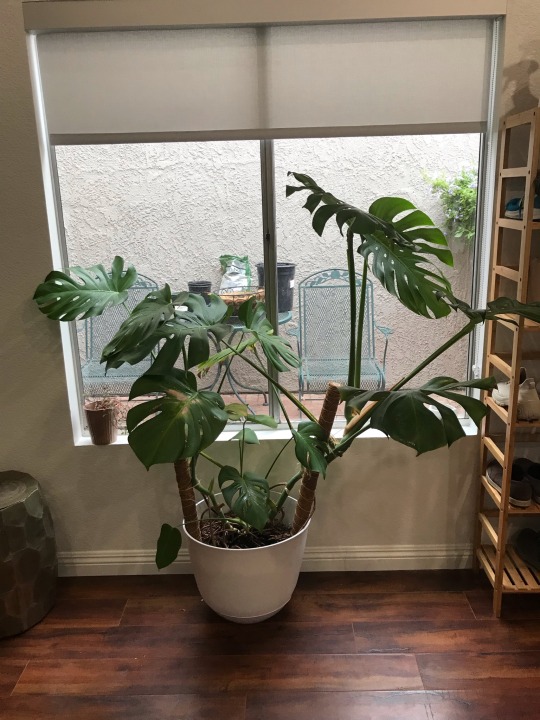
status of the house plant situation thus far 🌱
#i love plant#next plant i want is a CROTON#the leaf color is amazing#also i need to do something with my pothos#it’s starting to creep along the floor now#i wanna get some wall hooks and start training it into patterns#picture journal#OH ALSO#that monstera survived 2 weeks in a windowless and very hot moving box#it looked rough for awhile but has really bounced back i’m so proud
44 notes
·
View notes